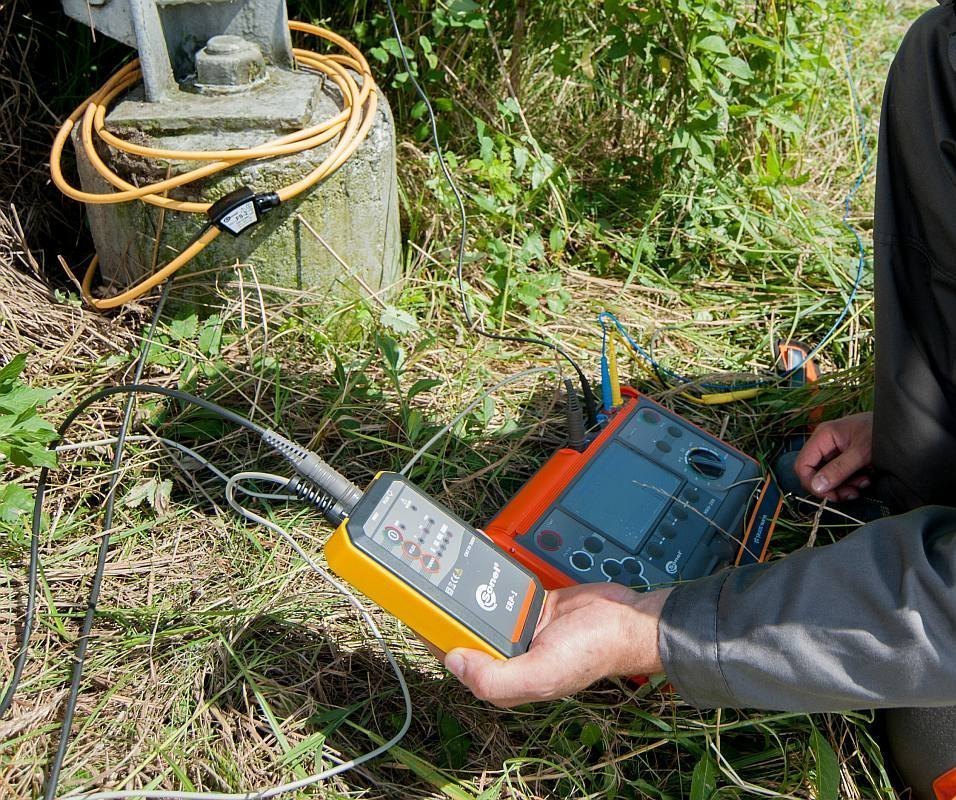Requirement for a Tower Grounding Device
The transmission tower grounding devices basically conducts the direct lightning current and power-frequency short-circuit currents efficiently into the earth. They are critical components which ensures the safety of persons around the towers as they hold certain lightning protection levels.
Table of Contents
The impulse impedance of a grounding device is the resistance offered to high voltage surges while grounding them. The impulse impedance is a function of the frequency of the transient voltage surge, which is very high during lightning. Therefore it has a direct impact on the tripping of the line, as high impulse impedance cannot efficiently direct the voltage surge to the ground, causing a considerable impact to the applied lightning protection.
The overhead ground wires faces the lightning strikes and because of lightning current, the tower top potential rises. The chances of a back flashover rises several folds when the voltage at the tower top is higher. Hence, supressing the tower top potential rise in comparision to the phase conductor is equally important part of the lightning protection design as is the installation of over head ground wires to intercept lightning strikes.
Whenever there is a lightning strike, lightning current i is directed to the earth through the tower and the tower grounding device, therefore, the potential rise in the tower top depends upon the performance of the grounding device.
![]()
where RI is the impulse grounding resistance of grounding, L is the inductance of the tower, proportional to its height, and b is the lightning current division factor.

When the potential difference between tower top cross arm and phase conductor caused by the lightning induced over voltage and electromagnetic coupling increases beyond the flashover voltage of the insulator string, a backflashover hits the insulator string. This can result in insulator disc rupture causing power line interruption. From the above equation, we can infer that the tower top potential is a function of the impulse impedance of the grounding device. Therefore, only by proper earthing design, the impulse impedance can be lowered, thus improving relaiblity and performance of the transmission line.
When the impulse grounding resistance is small, voltage across the insulator strings will also be small. If the voltage across the insulator is small then backflash over will not occur. Thus the impulse grounding impedance is an essential parameter to consider in the designing of the transmission line and it must be 20-70% smaller compared to power frequency earth resistance.
The impulse impedance of the grounding device is influenced by many factors like soil characteristics, peak amplitude, current wave form, grounding geometry. Because of the complexities involved in the calculation of the impulse grounding impedance, power frequency grounding resistance is taken as a reference along with an impulse co-efficient ranging from 0.3-0.8 is considered based on design standards. For EHV transmission lines the power frequency grounding resistance of 10Ω or less is the set standard for a better lightning performance with minimal chances of back flashover.
Components of the tower grounding device
Grounding conductor: The metallic path that will conduct the fault current or lightning current from the tower to the ground. These conductors are usually of copper or galvanized steel.
Ground Rods: These are long rods that are driven in the earth to establish a low resistance path for the fault current.
Earthing grid: It is a network of grounding conductors interconnected and buried in the soil around the tower base for efficient distribution of the fault current into the earth.
Bonding: Bonding ensures a good electrical connection of all metallic parts of the tower to the grounding system. Bonding results in an equipotential zone in the tower and reduces the chances of shock during a fault.
This article is a part of the Safety and Earthing page, where other articles related to topic are discussed in details.
